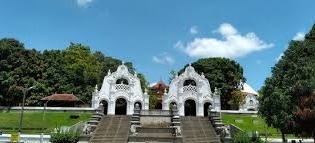Sacred Heritage in Sri Lanka
Sri Lanka, known as the "Pearl of the Indian Ocean," has been a stronghold of Theravada Buddhism for over 2,300 years. Sri Lanka's landscape is dotted with awe-inspiring historical sites that whisper tales of its 2,500-year-old civilization. From the ruined cities of Anuradhapura and Polonnaruwa to the colonial forts of Galle, these monuments showcase the island's rich Buddhist heritage and layered history. Among these treasures, none are more revered than the Solosmasthana – the sixteen sacred sites believed to have been blessed by the Buddha himself during his three visits to Lanka. These sites, believed to have been sanctified by the Buddha's visits or enshrined with his relics, have been pilgrimage destinations for centuries. This article explores the significance, history, and features of each of these sacred locations.
The Significance of Solosmasthana
The Solosmasthana (Sixteen Sacred Places) are deeply rooted in Sri Lanka's Buddhist tradition. According to ancient texts like the Mahavamsa, these sites were either blessed by the Buddha during his three legendary visits to the island or later sanctified by enshrining his relics. Pilgrims visit these sites to gain merit, meditate, and connect with the island’s spiritual heritage.
The Solosmasthana include:
Mahiyangana Viharaya (Badulla District)
Nagadeepa Viharaya (Jaffna District)
Kelani Viharaya (Colombo District)
Sri Pada (Rathnapura District)
Diva Guhava (Rathnapura District) – the location has not been identified definitively.
Deegavapi Viharaya (Ampara District)
Muthiyangana Chethiya (Badulla District)
Tissamaharamaya (Hambantota District)
Sri Maha Bodhi (Anuradhapura District)
Mirisawetiya (Anuradhapura District)
Ruwanweli Seya Stupa (Anuradhapura District)
Thuparamaya (Anuradhapura District)
Abhayagiri Viharaya (Anuradhapura District)
Jethawanaramaya Viharaya (Anuradhapura District)
Sela Chethiya (Anuradhapura District)
Kiri Vehera (Hambantota District)
Pilgrimage Tips:
Best Time to Visit: December–April (dry season)
Dress Code: Modest clothing preferably in white (cover shoulders and knees and wear no hats when entering temple sites)
Offerings: Flowers, oil lamps, and prayers are common
A sacred Pali verse, known as a gatha, venerates the Solosmasthana and is devoutly recited by Sri Lankan Buddhists. This hymn enumerates all sixteen holy sites and is traditionally chanted during devotional offerings to the Buddha, reinforcing spiritual connection and merit.
Mahiyanganan Naagadeepan
Kalyaanan Pada Lanchanan
Diva Guhan Deepavapi
Chethiyancha Muthinganan
Tissa maha Viharancha
Bodhin Marichawattiyan
Swarnamali Maga Chethiyan
Thuparama Bhayagiri
Jethawanan Sela Chethiyan
Thatha Kachara Gamakan
Ethe Solosthanani
Ahan Wandami Sabbada
1. Mahiyangana Viharaya (Badulla District)
Significance: Regarded as the first place the Buddha visited during his three journeys to Sri Lanka.
History: The original stupa was built by the deity Saman to enshrine a lock of the Buddha’s hair. Later, King Dutugemunu expanded it.
Features: A towering white stupa surrounded by lush greenery in the Uva Province.
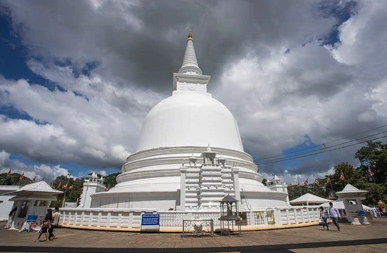

2. Nagadeepa Viharaya (Jaffna District)
Significance: The site where the Buddha mediated a dispute between two Naga kings, Chulodara and Mahodara.
History: One of the few places in the northern region associated with the Buddha’s visit.
Features: A tranquil temple on Nainativu Island, accessible by boat.
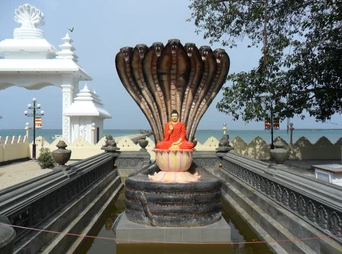

4. Sri Pada (Adam’s Peak, Rathnapura District)
Significance: The sacred footprint (Sri Pada) is venerated by Buddhists, Hindus, Muslims, and Christians.
History: Believed to be the Buddha’s footprint or that of Adam (Islamic tradition) or Shiva (Hindu tradition).
Features: A challenging pilgrimage climb, especially during the season (December–April).
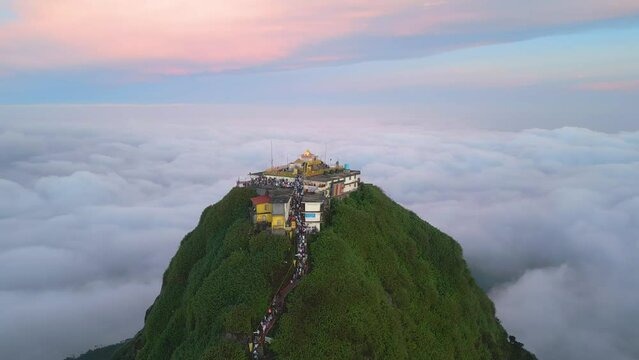

5. Diva Guhava (Rathnapura District)
Significance: A cave where the Buddha is said to have meditated.
History: The exact location is debated, but recent theories suggest Batathota Caves (Erathna) or Baghawa Lena (near Sri Pada).
Features: A serene, lesser-known pilgrimage site with natural caves.
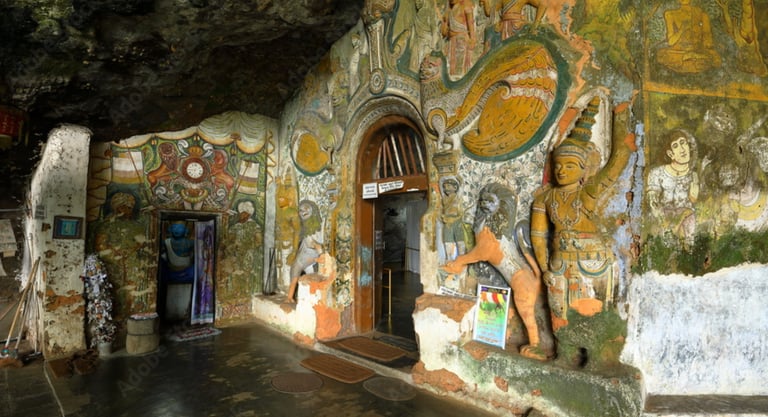

6. Deegavapi Viharaya (Ampara District)
Significance: One of the Solosmasthana, believed to have been visited by the Buddha.
History: Built by King Saddhatissa, brother of King Dutugemunu.
Features: A large stupa surrounded by forested land in the Eastern Province.
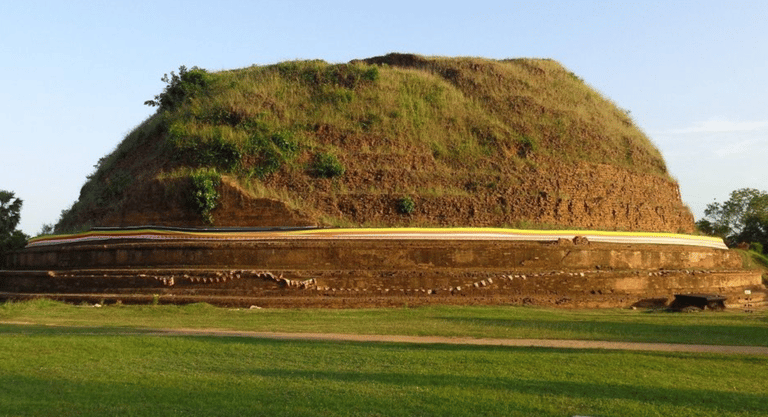

7. Muthiyangana Chethiya (Badulla District)
Significance: The Buddha’s second visit to Sri Lanka is said to have occurred here.
History: Originally a small stupa, later expanded by King Devanampiya Tissa.
Features: A sacred site in the heart of Badulla town.
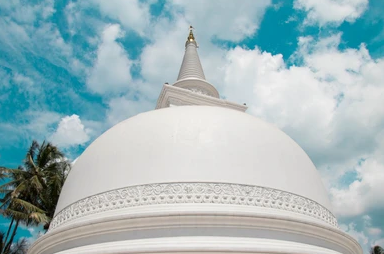

8. Tissamaharamaya (Hambantota District)
Significance: A major monastic complex in the ancient Ruhuna Kingdom.
History: Built by King Kavantissa, father of King Dutugemunu.
Features: A massive stupa and ruins of ancient monasteries.
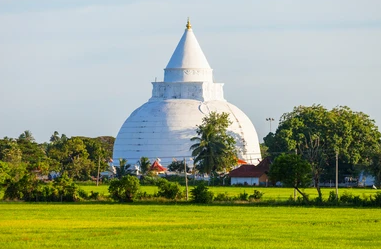

9. Sri Maha Bodhi (Anuradhapura District)
Significance: The oldest living human-planted tree, grown from a sapling of the
original Bodhi tree in Bodh Gaya.
History: Brought to Sri Lanka by Sangamitta Theri in the 3rd century BCE.
Features: Protected by golden railings, a major pilgrimage site.
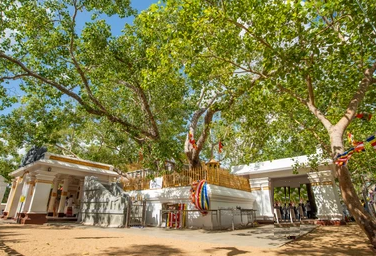

10. Mirisawetiya (Anuradhapura District)
Significance: Built by King Dutugemunu after his victory over King Elara.
History: Commemorates an incident where the king forgot to offer chili (miris) to
monks.
Features: A majestic stupa near Tissa Wewa.
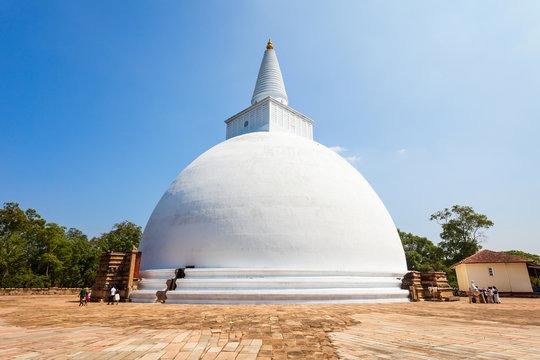

11. Ruwanweli Seya (Anuradhapura District)
Significance: One of the most sacred stupas, enshrining relics of the Buddha.
History: Built by King Dutugemunu in 140 BCE.
Features: A massive white dome, symbolizing Buddhist architecture.
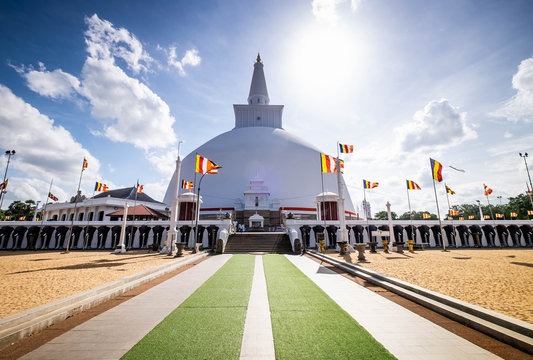

12. Thuparamaya (Anuradhapura District)
Significance: The first stupa built in Sri Lanka, enshrining the Buddha’s collarbone
relic.
History: Constructed by King Devanampiya Tissa in the 3rd century BCE.
Features: Unique circular design with stone pillars.
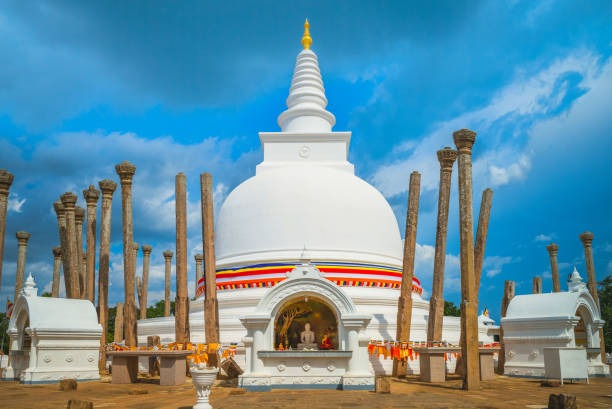

13. Abhayagiri Viharaya (Anuradhapura District)
Significance: A major monastic university and center of Theravada and Mahayana
Buddhism.
History: Built by King Valagamba in the 1st century BCE.
Features: Once one of the tallest structures in the ancient world.
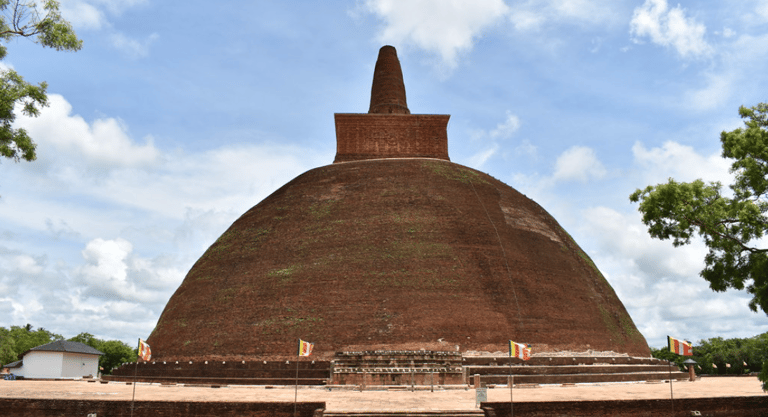

14. Jethawanaramaya (Anuradhapura District)
Significance: One of the largest brick structures in history.
History: Built by King Mahasena in the 3rd century CE.
Features: Originally 122 meters tall, now 70 meters.
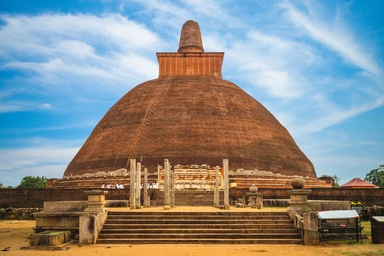

15. Sela Chethiya (Anuradhapura District)
Significance: A lesser-known but sacred stupa in Anuradhapura.
History: Believed to enshrine relics of the Buddha.
Features: Smaller in size but historically significant.
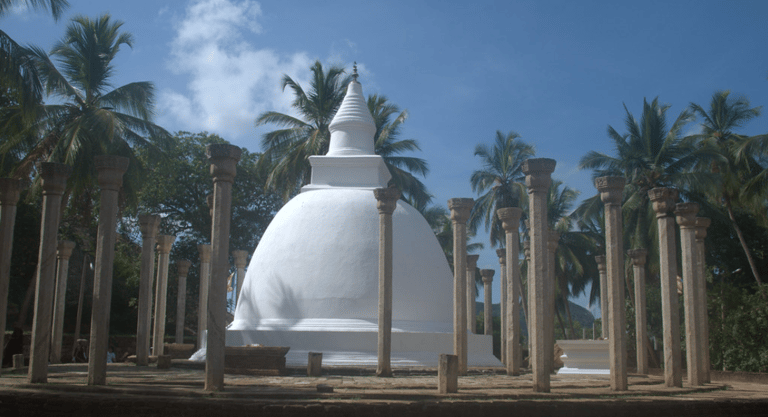

16. Kiri Vehera (Hambantota District)
Significance: A well-preserved stupa in the ancient Ruhuna Kingdom.
History: Built by King Parakramabahu.
Features: Known for its milk-white plaster and serene surroundings.
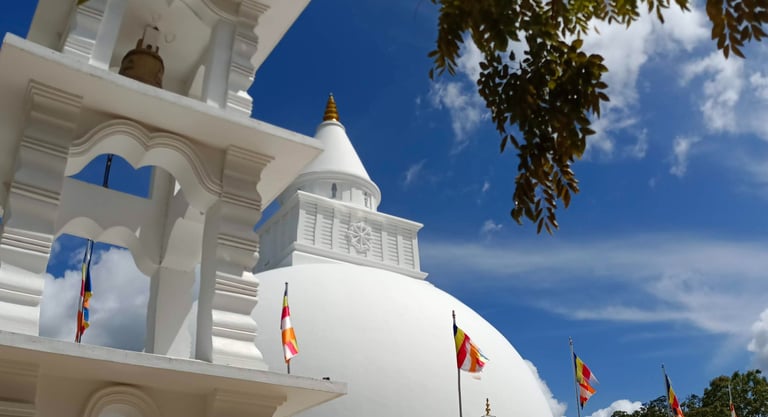

Sri Lanka's landscape is dotted with extraordinary historical monuments that showcase its rich cultural heritage beyond the sacred Solosmasthana sites. These remarkable structures stand as testaments to the island's ancient engineering prowess and artistic achievements.
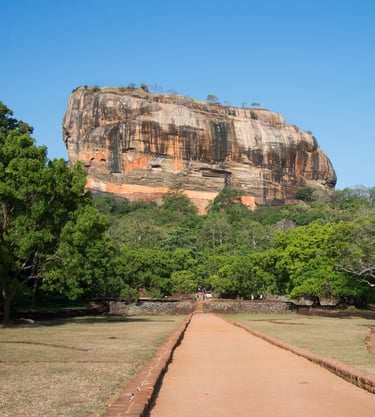

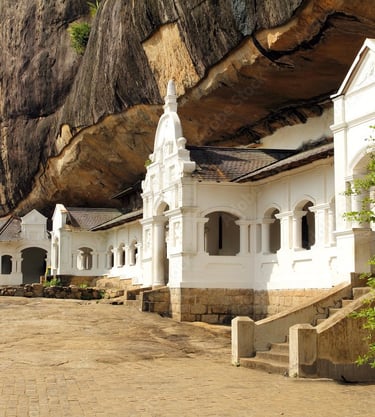

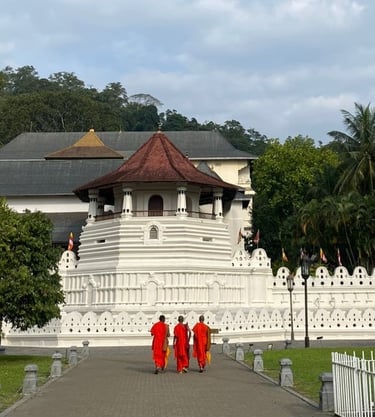

Sigiriya Rock Fortress
The crown jewel of Sri Lanka's ancient architecture, this 5th-century rock citadel rises dramatically from the plains. Marvel at the mirror wall with its ancient graffiti, the lion's paw entrance, and breathtaking frescoes of celestial maidens.
Dambulla Cave Temple
A golden-roofed cave complex with five sanctuaries, housing over 150 Buddha statues and vibrant 2,000-year-old murals.
Yapahuwa Rock Fortress
This short-lived 13th-century capital features an ornate staircase with exquisite carvings leading to the remains of a royal palace and temple complex.
Polonnaruwa Ancient City
This well-preserved medieval capital features:
Gal Vihara with its magnificent rock-carved Buddha statues
The impressive Royal Palace complex of King Parakramabahu
Lankatilaka Temple, a towering brick shrine with exquisite carvings
Temple of the Tooth (Sri Dalada Maligawa, Kandy)
The most sacred Buddhist site in Sri Lanka, this temple houses the relic of Buddha’s tooth. Its golden-roofed shrine, daily rituals, and the grand Esala Perahera festival highlight living traditions.
Mihintale
The birthplace of Sri Lankan Buddhism, where King Devanampiyatissa met Arahat Mahinda in 247 BCE. Pilgrims climb its 1,840 steps to sacred shrines.
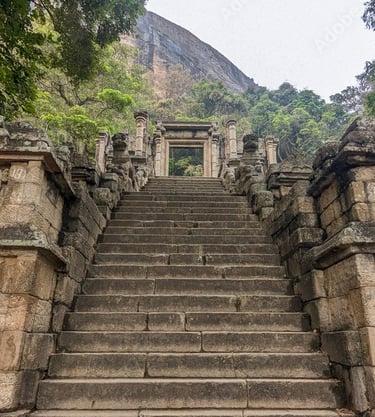

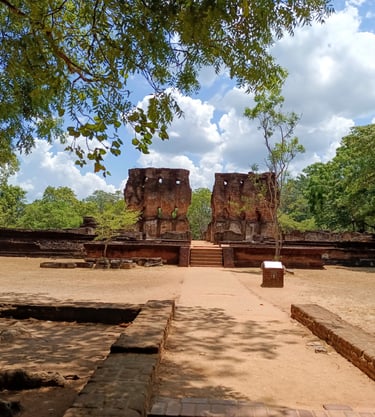

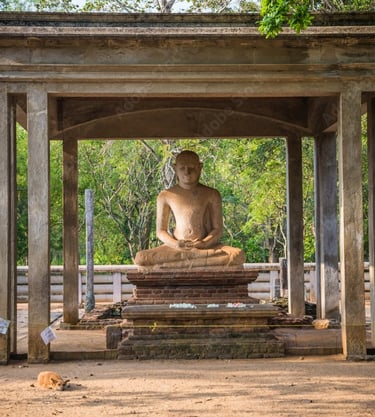

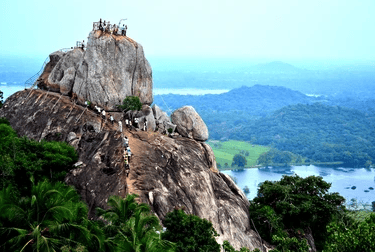

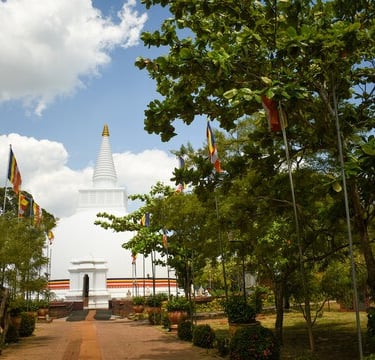

Anuradhapura Sacred City
A UNESCO World Heritage Site, this ancient capital (4th century BCE–11th century CE) boasts:
Sri Maha Bodhi
Ruwanwelisaya
Jetavanaramaya & Abhayagiri
Samadhi Statue in the position of the Dhyana Mudra
Somawathie Chaitya
Somawathie Chaitya is an ancient Buddhist stupa in Trincomalee's floodplains, housing a sacred tooth relic of the lord buddha. The stupa is named after Princess Somawathi, the sister of King Kavantissa.

